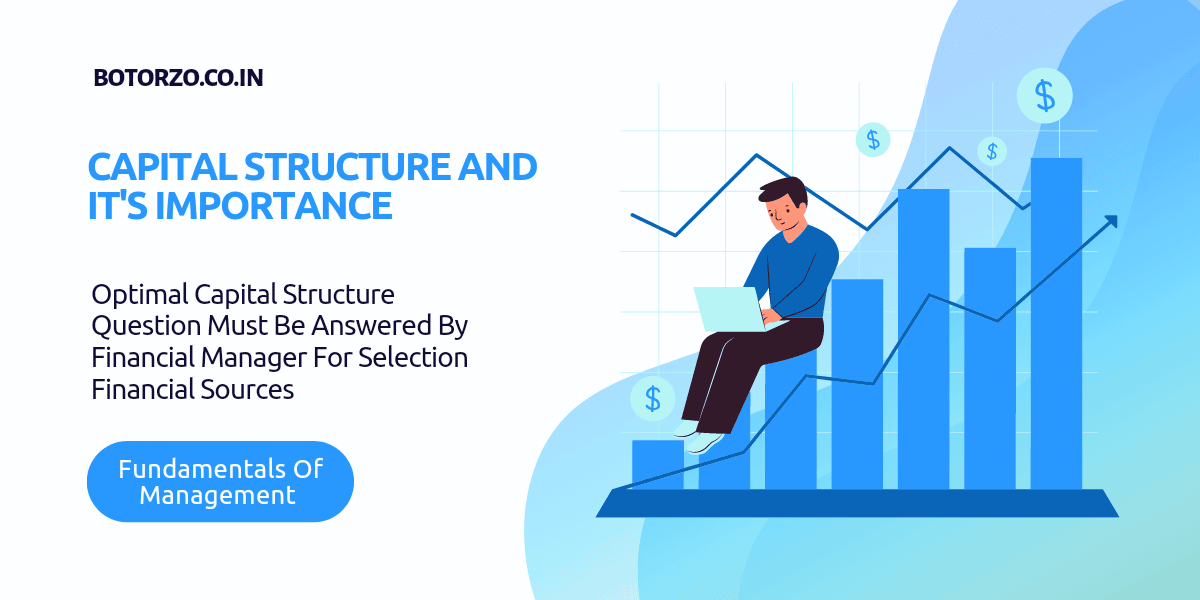
Meaning Of Capital Structure
The term “capital structure” refers to the proportion of the firm’s total capital allocated to various long-term sources of finance.
Long-term financing comes primarily from the following sources:
- Borrowed Funds
- Proprietor’s Funds
Proprietors Funds include equity capital, preference capital, reserves and surpluses (ie, retained earnings), and
Borrowed Funds include long-term debts such as bank loans, debentures, and so on.
The proportion of each of the above sources of finance in the total capital of the firm is determined in capital structure decisions. To put it another way, how much money will be raised from each of these sources.
In terms of risk and cost to the enterprise, these sources differ from one another. Some sources are less expensive but more risky, while others are more expensive but less risky.
To illustrate, debentures are the least stable source of finance (because the interest rate is usually lower than the dividend rate, and interest paid on debentures is deducted from profits when calculating taxes), but they are the most risky (because it involves a burden to pay the interest irrespective of the profits earned by the company and the debentureholders can move to the court to recover the interest and the principal amount).
Equity share capital, on the other hand, is the most expensive source of finance (due to the expected return by equity shareholders).
A financial manager makes an effort to minimise risk and cost of capital when selecting a source of finance.
Financial Manager must answer the following questions in order to select a Financial source:
- How much money should be raised through an equity offering?
- How much money should be raised through the issuance of preferred stock?
- How much should be raised through debentures and other long-term uncertainty.
The financial manager weighs the pros and cons of various sources of finance and selects the most advantageous sources when determining the proportion of finance raised from various sources.
The selection is also influenced by various internal and external factors, and thus the pattern of capital structure can differ between businesses as well as between companies within the same business.
Importance
Capital structure is a strategic move made by financial management. The combination of various sources of finance necessitates careful consideration. A wise and correct decision lowers the cost of capital and increases the value of a firm, whereas an incorrect decision reduces the value of the firm. As previously discussed, different sources of finance differ in terms of risk and cost. There is an urgent need to design an appropriate structure.
Capital structure decisions are critical for the following reasons:
- The firm’s risk tolerance is determined by its capital structure.
- The firm’s capital structure determines its cost of capital.
- It has an impact on the firm’s flexibility and liquidity.
- It has an impact on the firm’s owner control.
The Optimal Capital Structure
The optimal capital structure is that maximises the firm’s value. In other words, the structure is said to be optimal when the cost of capital is the lowest and the total value of the firm is the highest. As a result, in order to maximise shareholder wealth, the financial manager should determine an optimal structure for the firm.
Frequently Asked Questions
Types / Sources Of Long Term Finance
1. Owned Fund 2. Borrowed Funds
Types Of Financial Sources
Long Term Finance
Medium Term Finance
Short Term Finance
How to Make Optimal Capital Structure
Make Capital Cost Low And Firm’s Value Is High.
Our Another Domains Vidyapedia.in And Uietmdu.in

Comments (1)
Features or Qualities of Optimum or Sound Capital Structuresays:
October 29, 2023 at 6:41 pm[…] Read From Here […]